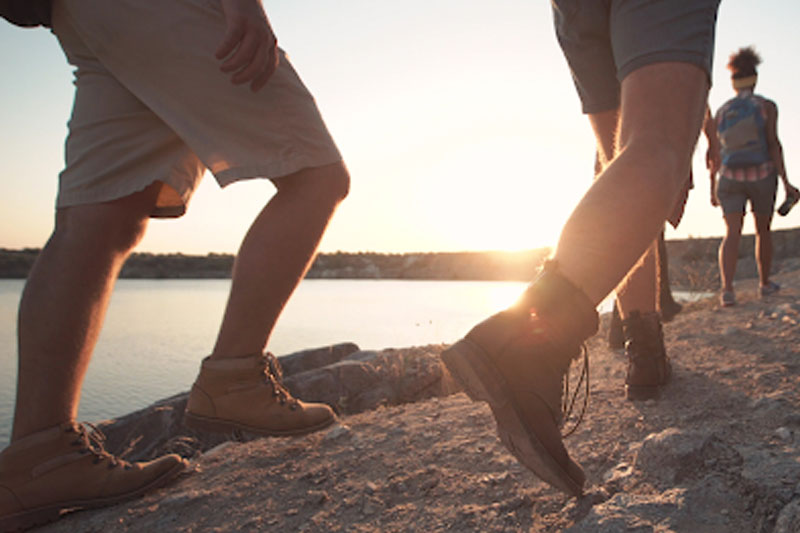
Movement is key. It can reduce the risk of cardiovascular disease, diabetes, and stroke, strengthen your muscles, heart, and lungs, lower blood pressure, and even help you live longer. But did you know movement has other positive benefits?
Be Happier
Exercise has long been proven to be a mood booster. Physical activity, even at moderate levels, prompts the release of neurotransmitters such as endorphins, dopamine and serotonin, which are all chemicals produced by your brain and spinal cord that contribute to feelings of happiness and euphoria.
As we age, our brains change. Adults can lose up to 13% of our dopamine receptors—the parts of our reward center that register the presence of those neurotransmitters—per decade of adulthood. Substance abuse can reduce the availability of those receptors even further.
But physical activity can prevent the decline of dopamine receptors in the brain as we age. Recent research also suggests that for some, it can even increase dopamine receptor availability, helping us feel happier, longer.
Augment Your Intelligence
Those same neurotransmitters that make us happier also help us concentrate better, leading to a feeling of mental sharpness. Feeling stuck on a project at work? Step away from your desk to move—take a walk, stretch or whatever feels right for your body—and you might come back with a new idea or creative breakthrough.
Recent studies also indicate that cardiovascular exercise in particular, such as walking, running, cycling or swimming, helps our bodies create brand new brain cells through a process called neurogenesis. This process contributes to overall brain performance, as well as prevents cognitive decline and memory loss.
Decrease Anxiety
A growing body of research is exploring the impact movement can have on clinical depression and anxiety. Studies show that the prevalence of depression and anxiety is lower among those who are regularly active, and that moving more can reduce symptoms for those who do suffer from these disorders.
Additional research suggests that movement may also ease symptoms of stress, ADHD, PSTD and trauma.
Forge Connections
A friend, spouse or other accountability buddy can be instrumental in helping you stick to an exercise regimen. But did you know that being physically active alongside another person can significantly strengthen your trust and relationship with that person, too?
Moving with a group of others in group exercise, yoga or dance, for example, activates the endogenous opioid system—a group of chemicals and receptors in our bodies—which increases our pain threshold and feelings of social closeness. Many classes are now available remotely too, so you can queue up the class from home.
Another study looking at older married couples also showed that exercising together was associated with higher daily marital satisfaction and more positive marital events overall.
Transform Your Self-Image
No Bootcamp Required: Just Move
Starting an exercise program may seem daunting. Take heart, though. You can take small steps (literally) and develop a healthy exercise habit. Adding one simple movement or activity to your daily routine, even in brief bouts throughout the day, can provide phenomenal benefits and set you on the path to a healthier life.
Movement does not need to be about high-impact, sweat-inducing exercise, it can include simple movements in your daily routine – or exercise activity thermogenesis, or N.E.A.T.
What is N.E.A.T.?
Non-exercise activity thermogenesis (N.E.A.T) is the energy expended for everything we do that is not sleeping, eating or sports-like exercise. It ranges from the energy expended walking to work, typing, performing yard work, cleaning the house and doing recreational activities.
N.E.A.T includes the calories expended outside of exercise, eating and sleeping. Simple tasks such as raking leaves, physical labor, climbing stairs and even fidgeting help us expend additional calories.
How to Increase N.E.A.T. While You Work
Incorporate more activity into your daily routine this week. Pick a N.E.A.T. activity that you enjoy, and start small. Walking, especially after meals and during quick breaks, is a great way to get your body moving, improve glucose levels and keep your time in range (TIR) in check. Walk to the drinking fountain to fill your water bottle. Take the long way to your boss’ desk. Here are some other great ways to increase movement while you work:
- Implement walking meetings. Walk around the office, home or head outdoors and boost creativity and movement. Walking burns calories, stimulates the brain and bonds the team. Take that call on the go!
- Set a reminder to stand and move at least once per hour. Give your eyes and body a break from the computer screen by moving around.
- Stand instead of sit. Use adjustable or treadmill desks to stand throughout the day.
Creative Ways to Add Movement
Here are some creative ideas to integrate movement into your life:
- Use a treadmill, stationary bike or any type of workout equipment at home while watching TV. Do a quick chore during commercial breaks.
- Walk, bike or bus to work instead of driving.
- Take the stairs.
- Park farther from the store entrance, and enjoy your walk to and from your car.
- Do yardwork, housework or home DIY projects, such as mowing the lawn, raking leaves or reupholstering a chair!
- Play with your kids! Pick a fun activity that gets your heart rate up, while also spending quality time with your loved ones.
If your day lacks N.E.A.T., think of one or two ideas that you can start with to integrate movement into your day or week. Find small ways to move. It may not burn as many calories as going for a jog or doing an exercise class, but even small body movements help our body take advantage of N.E.A.T. Making conscious decisions to move and use our body more is the first step.
Disclaimer: Be sure to check with your primary care provider before you start an exercise program.
May. 14 2020